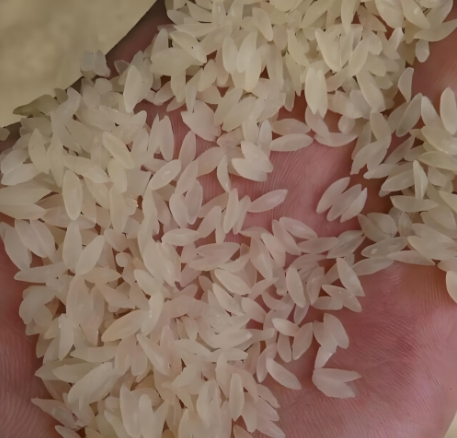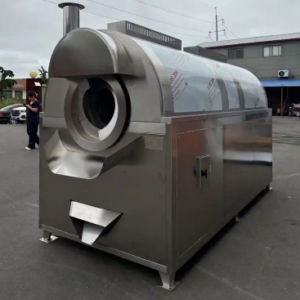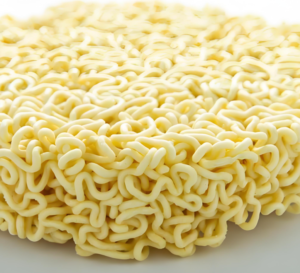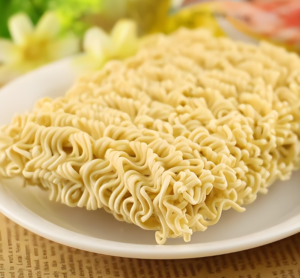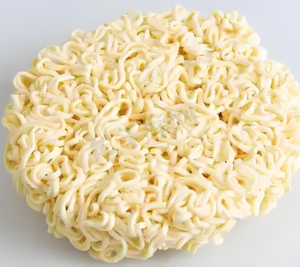<h1>How to Effectively Cool Down Machines in Fortified Rice Production</h1>Introduction to Fortified Rice Production
Fortified rice production involves enriching regular rice with essential vitamins and minerals to combat malnutrition. This process typically uses advanced machinery for extrusion, coating, and drying, which generates significant heat. Overheating can lead to equipment failure, reduced efficiency, and compromised product quality.
fortified rice making machine
ToggleIn the global food industry, fortified rice is a key solution for nutritional security, especially in developing regions. Manufacturers must prioritize machine cooling to maintain operational standards and meet international export regulations.
The Importance of Machine Cooling in Fortified Rice Production
Machine cooling is critical in fortified rice production to prevent thermal damage to sensitive components like extruders and dryers. High temperatures can degrade nutrients added during fortification, affecting the rice’s nutritional value and safety.
From a B2B perspective, effective cooling systems enhance productivity and extend machinery lifespan, reducing downtime and maintenance costs. This is particularly vital for foreign trade exporters who rely on consistent output to meet global demands.
Overheated machines can also pose safety risks to workers and increase energy consumption, leading to higher operational expenses. Implementing robust cooling strategies ensures compliance with ISO standards and FDA guidelines for food processing.
Common Methods for Cooling Machines in Fortified Rice Production
There are several proven methods for cooling machines in fortified rice facilities. Air cooling uses fans and ventilation systems to dissipate heat, making it a cost-effective option for smaller operations.
Water-based cooling systems, such as chillers and cooling towers, circulate cooled water through machine jackets. This method is highly efficient for high-heat processes like extrusion, where temperatures often exceed 100°C.
Refrigeration and cryogenic cooling involve using liquid nitrogen or CO2 to rapidly lower temperatures. These are ideal for precision cooling in fortified rice coating stages, ensuring even nutrient distribution without thermal degradation.
Advanced Cooling Technologies and Their Applications
Modern fortified rice production lines benefit from advanced technologies like closed-loop cooling systems, which recycle coolant to minimize water waste. These systems are environmentally friendly and help exporters meet sustainability certifications.
Heat exchangers play a key role by transferring heat from machines to a separate medium, such as air or water. In large-scale facilities, they maintain optimal temperatures for drying and packaging, preventing moisture buildup that could spoil the rice.
Integration of IoT sensors allows real-time monitoring of machine temperatures, enabling automated adjustments. This technology is increasingly popular in B2B trade, where data-driven decisions improve efficiency and reduce errors.
Best Practices for Implementing Cooling Systems
To implement effective cooling, start by conducting a thermal audit of your fortified rice production line. Identify heat hotspots and select cooling methods based on machine type and production volume.
Regular maintenance is essential; clean filters and inspect coolant levels weekly to avoid blockages. For exporters, partnering with reliable suppliers ensures that cooling components meet international quality standards.
Incorporate energy-efficient designs, such as variable-speed fans, to lower operational costs. Training staff on cooling system operations can prevent misuse and extend equipment life, fostering a safer work environment.
Challenges and Solutions in Machine Cooling
One common challenge is inconsistent cooling in humid environments, which can affect fortified rice’s shelf life. Solutions include using dehumidifiers alongside cooling systems to maintain stable conditions.
Cost constraints often limit upgrades for smaller manufacturers. Leasing advanced cooling equipment or opting for modular systems provides affordable access to technology without large upfront investments.
In foreign trade scenarios, varying voltage and climate conditions pose risks. Standardizing cooling setups with adaptable components ensures seamless operations across different markets.
Case Studies: Real-World Applications in Fortified Rice Manufacturing
A leading Asian exporter implemented a water-cooling system in their fortified rice plant, reducing machine downtime by 40%. This upgrade allowed them to increase production capacity while maintaining nutrient integrity.
In another case, a European facility used air-cooling enhancements with IoT integration. They achieved a 25% reduction in energy costs and improved product consistency, boosting their B2B competitiveness in global markets.
These examples highlight how tailored cooling strategies can lead to measurable benefits, such as higher yields and better compliance with export regulations.
Frequently Asked Questions
Here are some common questions about cooling machines in fortified rice production:
- What is the ideal temperature range for fortified rice machines? The optimal range is typically 20-40°C to prevent nutrient loss and ensure machine efficiency.
- How often should cooling systems be maintained? Perform checks every 1-2 weeks, with full servicing every 3-6 months depending on usage.
- Can air cooling be sufficient for large-scale production? It works for smaller setups, but water or refrigeration systems are recommended for high-volume fortified rice lines to handle intense heat.
- What are the cost implications of advanced cooling technologies? Initial costs can be high, but they offer long-term savings through energy efficiency and reduced downtime.
- How does machine cooling impact export quality? Proper cooling ensures product consistency and safety, helping meet international standards like HACCP for global trade.
Conclusion
In summary, effective machine cooling is essential for optimizing fortified rice production, enhancing efficiency, and ensuring high-quality outputs for B2B markets. By adopting the right methods, best practices, and technologies, manufacturers can overcome cooling challenges, reduce costs, and maintain a competitive edge in foreign trade. Prioritizing these strategies not only boosts operational reliability but also supports sustainable and nutritious food solutions worldwide.

